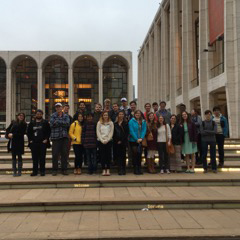
Recently, I accompanied classics professor Nina Papathanasopoulou and her "Classical Mythology" class on a field trip to the Metropolitan Opera in New York to see Richard Strauss’ opera "Elektra." As a music nerd and active student in the Music Department, I really enjoyed getting to see the work of some of the greatest performers in the world; I find that watching other people play is the greatest teaching tool in music, and I’m fortunate to see a lot of performances on and off campus.
I really enjoy how easily we can get to New York City and Boston from Conn. Although New York is 120 miles from campus, it’s still possible to travel between Conn and the city within one day, which is something that I have done on my own before using the train. While we didn’t spend very much time in the city because it was a Tuesday, it made for a great respite from the middle of the week, and I did enjoy walking a little down Broadway. Being close to both cities gives professors the opportunity to take students into the city when they want to show them something that’s relevant to class and inspire their students.
The performance also had connections to the first-year seminar I took last fall, "Tragedy, Comedy, and Philosophy." The first thing we read in that class was "The Oresteia," a cycle of tragedies about the story of the House of Atreus by ancient Athenian playwright Aeschylus. "The Libation Bearers," the second play in the cycle, is based on the same part of the myth as Elektra. However, Aeschylus’ version centers on Orestes’ revenge killing of Klytaemnestra and Aegisth whereas Strauss probes the psychology behind Elektra’s encouraging him to do so.
Watching the opera made the story come alive for me even more than reading the play did. Although "Elektra" is not based on Aeschylus’ play, I felt like this production drew off his work by staging the deaths, which normally occur offstage in the opera. The final stage tableaux of the first two plays of "The Oresteia" prominently display the bodies of the characters that are killed in the course of the tragedy, and this was reproduced in the final scene of the production.
Overall, it was a great night to see a show in the city. Next fall, I’m taking a class that might take a field trip to New York City, but I’m not waiting until then—as I write this, I’m already planning my next foray there!